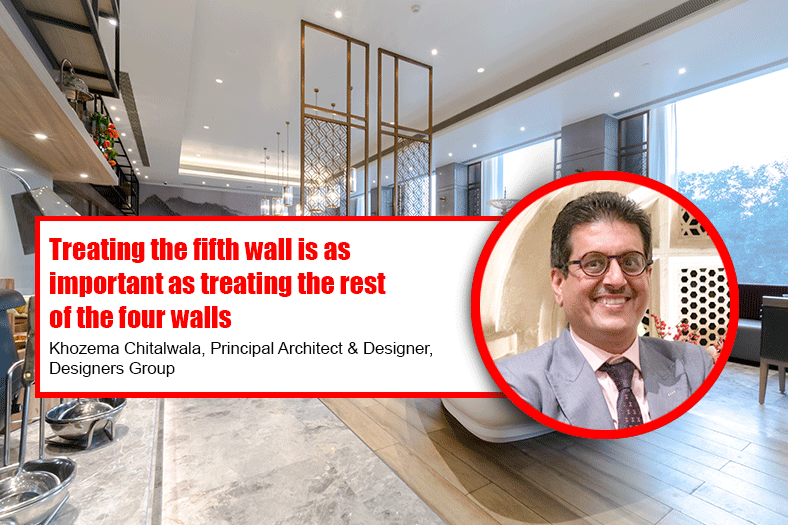Treating the fifth wall is as important as treating the rest of the four walls

One of the leading architects of the nation and the Khozema Chitalwala, Principal Architect & Designer, Designers Group offers us his expert opinion on the varied aspects of ceiling and flooring design.
The importance of the fifth wall in interior design
Treating the fifth wall is as important as treating the rest of the four walls as the ceiling takes the centre stage of any sphere. While creating an ambience for space, the ceiling becomes prime, housing a lot of services. It allows the designer to play with the lighting system where one can incorporate direct & indirect lighting through pre-possessing ceiling designs. Ceiling highlights the grandeur of space while portraying its instilled regal charm.
Evolution of ceilings over the years
Wooden, gypsum and POP ceilings have been in trend for a long time now. Modular ceilings are also used extensively for commercial spaces as they are economical and commercial spaces tend to have more services as compared to a residence. Aluminium, GI and louvered ceilings are some of the other options that are in trend these days but using them is mostly dependent on the functional regime and typology of the project.
Advantages of using a vaulted ceiling
A vaulted ceiling immediately expands the look and feel of a space. It works great when used in order to enhance a specific area. These ceilings have sloping lines that run from the top of the wall to the point of the ceiling. Belonging to the Gothic era of Architecture, they have a dramatic impact and define deep significance to the same. Infusing vaulted ceiling into a contemporary architecture style aids to provide a distinguished ambience to space.
False ceiling and a concealed conduit wiring system
Concealed wiring systems are not generally preferable. Designers need to follow numerous norms & parameters and once the slab is concealed, the flexibility of services and design is jeopardised. Hence, concealing exposed wires at the bottom of the slab level becomes a more suitable choice forthe conduits.
Popular options for flooring
Tile, stone, wood, vinyl and laminate flooring are some of the most popular options that are being extensively used by numerous designers across the globe.
Use of traditional flooring
Traditional flooring is still being used but people who understand technology well are not in favour of using regular cement and mortar. The best flooring optionsare stone and tile adhesive flooring as it saves labour, time and proves to be a more refined way of installation. Also, in case of adhesive flooring, there is no chance of mortar or cement getting perforated in stone or tile.
Choices and Limitations
Once the flooring is installed, the floor acquires its load-bearing strength and gets ready for load transfer. Every flooring material has its own loadbearing properties subjected to a certain amount of foot traffic. One can’t use Italian marble for exterior flooring purposes due to its brittle attributes and limited wear & tear capacity. Also, if there is air cavity formulation at the time of laying, the marble may crack. For exterior areas, economical material with better load-bearing properties like tiles work best.
Advantages of laminate flooring
Laminate flooring is amongst the most economical & functional options, granting an eye-pleasing warmth of wood to space. In fact, it may work great for a particularly large scale or even other typologies of projects. While catering to the aesthetic appeal assimilating a whole new range of wooden textures, laminates flooring also provide longevity and durability factors for space.
The best option for Indian homes
India has a wide range of diversity with respect to climatic conditions. Flooring material that a designer may use in Kerala or Goa may differ from Himachal Pradesh, Kashmir or Rajasthan. Material specifications in India are subjected to change with its geographical condition.
Cookie Consent
We use cookies to personalize your experience. By continuing to visit this website you agree to our Terms & Conditions, Privacy Policy and Cookie Policy.









